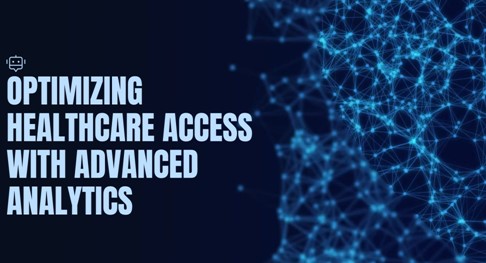Healthcare accessibility is evolving with advanced analytics solutions. Venkata Prasanna Kumar Pentakota, a healthcare analytics expert, has developed an innovative framework that utilizes real-time data to enhance provider distribution. His approach integrates artificial intelligence and dynamic classification systems to address critical gaps in resource management. By leveraging data-driven insights, his solution enables proactive decision-making, optimizing provider allocation and improving patient access. This transformative method enhances healthcare efficiency, ensuring better coverage and streamlined resource utilization for improved patient care.
Addressing the Growing Demand for Healthcare Providers
The disparity in healthcare provider distribution remains a significant challenge, particularly in rural and underserved areas. Traditional allocation models often fail to capture real-time fluctuations in demand, leading to inefficient provider coverage. The new analytics-driven approach enhances accessibility by using real-time search data from physician finder tools, allowing organizations to proactively address provider shortages. This system categorizes geographic areas into red, yellow, and green zones, reflecting their provider-to-patient ratio and improving decision-making for resource allocation.
Harnessing Big Data for Dynamic Geographic Analysis
At the core of this solution is a robust data analytics framework that processes vast amounts of information from patient search behaviors. By analyzing over 2.3 million provider searches monthly, the system identifies patterns in demand and helps optimize recruitment strategies. Traditional methods often lag months behind emerging trends, but this approach provides healthcare networks with predictive insights that enable immediate action.
AI-Driven Classification for Real-Time Decision Making
A key feature of the platform is its AI-enhanced classification system, which assigns real-time provider availability ratings. This model outperforms static systems by accurately assessing utilization rates, reducing misclassification errors, and predicting access bottlenecks weeks in advance. The classification system operates with 96.8% accuracy, offering healthcare administrators actionable insights to address shortages before they escalate.
Cloud-Native Infrastructure for Scalable Data Processing
The system’s cloud-native architecture ensures seamless scalability, handling up to 850 terabytes of data monthly with real-time processing capabilities. Leveraging a Lambda architecture that integrates batch and stream processing, the platform maintains 99.96% data freshness. This robust infrastructure allows healthcare organizations to monitor provider availability with unparalleled precision, reducing system latency to just 76 milliseconds for critical updates.
Predictive Analytics Enhancing Resource Planning
Predictive analytics models integrated into the platform allow healthcare organizations to anticipate provider demand months in advance. Neural networks achieve a forecasting accuracy of over 93%, ensuring optimal staffing levels and reducing reliance on reactionary hiring. Additionally, real-time anomaly detection helps identify emerging trends, allowing administrators to adjust recruitment efforts dynamically.
Improving Healthcare Accessibility and Patient Flow
A comprehensive geospatial analytics engine enhances patient accessibility by continuously updating provider availability data. The system factors in real-time traffic conditions, public transportation nodes, and patient mobility patterns to refine its accessibility scores. This approach ensures that patients can locate the most appropriate providers within reasonable travel distances, addressing critical barriers to care.
Financial Impact and Operational Efficiency Gains
The adoption of this analytics-driven system has brought substantial financial and operational gains for healthcare organizations. Research shows a 43.7% decrease in provider recruitment costs and a 52% boost in revenue cycle efficiency. Organizations using this solution have experienced a 56.8% rise in provider satisfaction and a 42.7% improvement in patient access to care, demonstrating its effectiveness in optimizing healthcare resource management and service delivery.
Future Enhancements and Scalability
As healthcare organizations continue to integrate digital transformation strategies, this analytics framework is poised for further enhancements. Planned updates include the incorporation of blockchain technology for credential verification, edge computing for real-time data processing, and improved AI models to refine predictive capabilities. These advancements aim to further streamline provider allocation, improve accessibility, and enhance overall system efficiency.
In conclusion, the innovative analytics solution by Venkata Prasanna Kumar Pentakota is redefining healthcare provider distribution. Utilizing AI, big data, and cloud technologies, this framework enhances resource allocation and improves patient access to care. With predictive analytics and real-time classification at its core, it enables proactive decision-making, ensuring efficiency and sustainability. This transformative approach is revolutionizing modern healthcare management, driving long-term operational excellence and optimizing provider networks to meet evolving patient needs effectively.



































